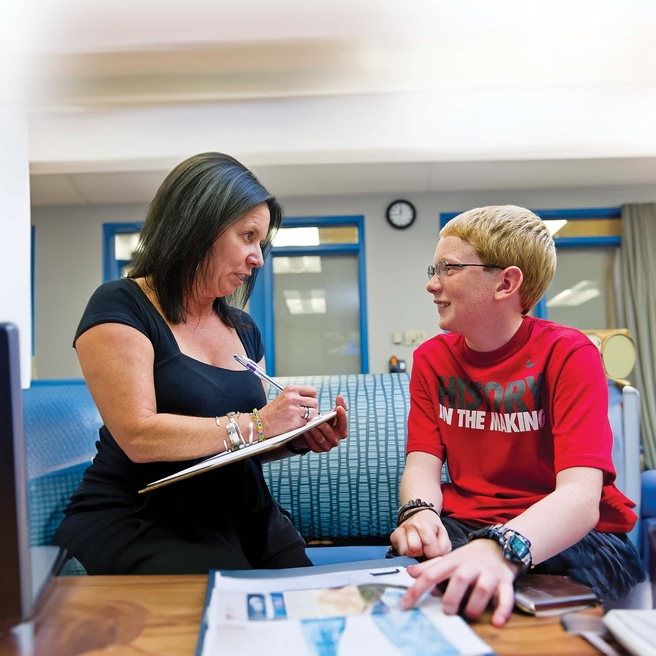What are cerebral palsy hip disorders?
Children with cerebral palsy may develop hip disorders over time, in which tight muscles cause the hip to be forced out of the socket. As the child ages, a dislocated hip can become very painful.
In ambulatory children, hip dislocation can be a detriment to walking. In non-ambulatory children, sitting balance, skin breakdown and diapering can be hindered by hip dislocation.
Causes
The majority of children with cerebral palsy develop spasticity, in which their muscles tighten involuntarily, causing stiffness. Spasticity in the muscles around the hip places abnormal forces on the hip joint, eventually causing the hip to dislocate from the socket.
Testing and diagnosis
Your child's initial orthopedic evaluation will include a careful examination of hip motion and an X-ray, if appropriate.
At Children’s Hospital of Philadelphia (CHOP), we conduct hip surveillance to periodically screen children with cerebral palsy for hip dislocation. The screening protocol we use was developed in at one of the world’s most well-known cerebral palsy clinics, located in Australia.
The frequency of these screenings is based on the level of involvement of your child’s cerebral palsy.
Treatments
If the patient shows signs of a “hip at risk,” the hip adductor muscles (tight muscles on the inside of the leg) may need to be released to slow progression of the condition.
If the condition progresses to displacement, bony surgery may be performed to relocate the hip in the socket and help keep it there. Surgery on the thigh bone and/or hip socket may be necessary to fully correct the condition.
Older children who have developed painful dislocated hips may require removal of the hip joint or a corrective osteotomy to move the painful arthritic ball away from the socket. In cases of painful arthritic hips in ambulatory patients, total hip arthroplasty may be recommended.
More about surgery for cerebral palsy hip disorders
Learn more about the many surgical techniques that might be used to reconstruct the hip in children with neurologic disorders, including preparing for and recovering from surgery.
Resources to help
Cerebral palsy hip disorders Resources
Cerebral Palsy Program Resources
We have gathered resources to give you information and help you find answers to your questions. We hope this makes your family’s life a bit easier.
Reviewed by Keith D. Baldwin, MD, MPH, MSPT
